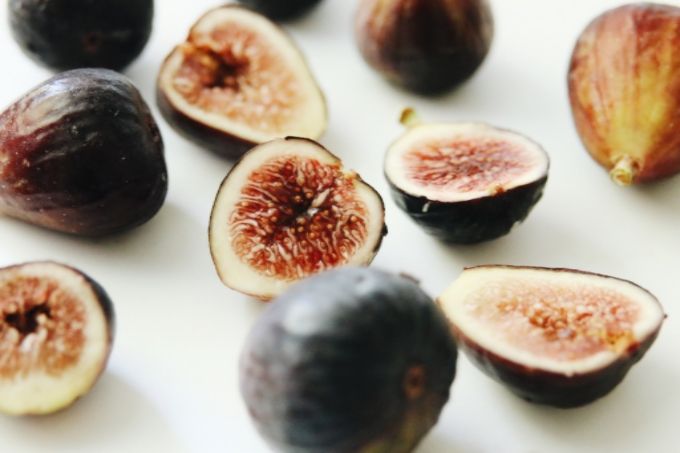Monday Morning Wellness: Fig Tartine Recipe

In the realm of sexy foods, figs might just be the sexiest of them all. Forget chocolate. Forget wine or oysters. If you really want to add sensuality to any meal, go find yourself some figs.
With delicate flesh that gives way to a ravishing pink interior studded with tiny seeds, the fig’s allure is only heightened by its relative scarcity. With a short growing season, they languidly make their entrance in late summer and linger just long enough to remind us how much we’ve missed them. Sweet, juicy, undeniably addictive, fig season is a season to be relished. Luxuriated in. Figs should be eaten with reverence or, better yet, shared with someone you’re not too shy to feed one to. But this jewel-like fruit is more than just a voluptuous accompaniment to your table. Figs are packed with nutrients like fiber, vitamin B6 and potassium (healthy is sexy, folks).
A member of the mulberry family, figs grow on the fig tree (big surprise) and are one of the earliest known cultivated “fruits” (note: figs aren’t actually fruits but are what’s known as “false fruits” — or a fruit that forms at least partially from another part of the plant. Strawberries are another false fruit.), with roots that can be traced back to ancient Egypt, Rome and Greece. One of the most delicate and perishable fruits, figs were considered sacred in more than one culture, are mentioned in the Bible and play a key role in the myth of Romulus and Remus. With a dark chewy skin and a bright pink, crunchy, juicy interior, the most common varieties — the ones most often sold at markets and in stores — are Black Mission figs, which owe their name to the missions of San Diego where they were first cultivated in North America in 1769, and Brown Turkey figs, one of the most common varieties available. Figs not only have more vitamins and minerals than any other fruit, they also offer more soluble and insoluble fibre, making them ideal for maintaining heart, cardiovascular, and gut health. Figs’ high levels of potassium aids in lowering overall blood pressure, while their calcium strengthens bones. The antioxidants present in the fig’s dark flesh help neutralize free radicals, keeping tissues healthy while boosting immunity and collagen.

Fig Tartines with Cashew Cream
*Note: this recipe comes together in minutes, but does require overnight soaking for your cashews
Ingredients:
½ cup raw unsalted cashews + water for soaking
1 tsp raw honey or maple syrup
2 tsp water
½ tsp vanilla extract
½ tsp lemon juice
Pinch of sea salt
Dash each of ginger and cinnamon
Fresh figs
Bread or crackers of choice
Place the cashews in a measuring cup or jar and cover with cold filtered water. Allow to soak at least 8 hours.
Rinse the cashews well and place in a food processor. Add honey/sweetener, water, vanilla, lemon juice, sea salt, ginger and cinnamon and pulse, scraping down the sides as needed, until creamy and well combined.
To make the tartines, slice your bread and toast until golden. Spread toasted bread with cashew cream and top with sliced figs. Sprinkle lightly with sea salt. Alternately, the cashew cream is delicious spread right on the fig and sprinkled with a little sea salt. Enjoy!

